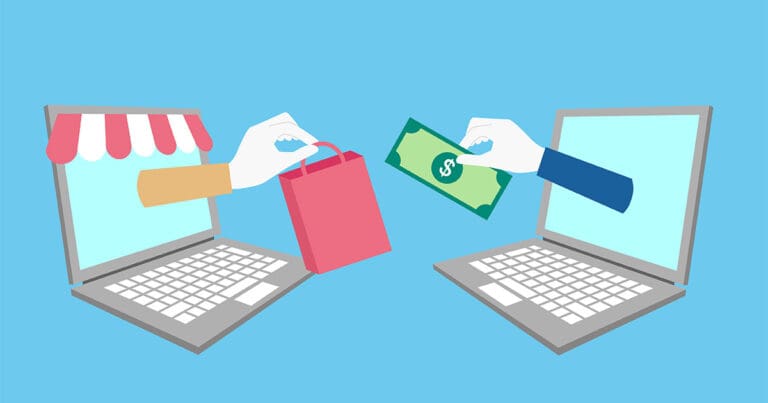What to Do After Getting Fired or Laid Off

Getting laid off can be devastating, especially if it comes as a surprise.
According to the Bureau of Labor Statistics, as of May 2022, there were 1.4 million layoffs and discharges in the United States — including a growing number of mass layoffs.
If you find yourself in this situation, know that you’re not alone.
After getting fired, it’s important to take the necessary steps to ensure that the transition goes as smoothly as possible.
Not only do you need to focus on your mental and emotional well-being, but you also need to make sure that your more practical needs are being met.
How to best handle being fired
Take some “me time” after being laid off
Losing a job is ranked as one of the most stressful major life events a person could experience. This is why it’s important to give yourself some time to grieve the loss of your job.
It’s OK to take some time to sit with the feelings around losing your job and learn to cope with them. But after that, it’s important to start taking steps to move on.
Reflect on what you’d like to do next after being laid off
As you navigate the first couple of weeks after losing your job, take some time to think about what you’d like to do next.
Were you truly happy at your last job? Could you be open to trying something new? Is it time to consider learning a new skill?
Answering questions like these can help you to formulate a plan for what to do next when it comes to your job search.
What to do after you’ve been fired or laid off
1. Check your legal rights when you’ve been laid off from work
When you’ve been laid off from work, there are certain legal rights that you have as an employee. It’s important to be aware of these so that you can make sure that your former employer is treating you fairly.
You can find out more about your legal rights as an employee by contacting your local labor board or speaking with an experienced employment lawyer.
2. Get a “lay-off” letter from HR
When you’ve been laid off from your job, your employer should give you a “lay-off” letter. This letter will confirm the date of your termination and any other relevant information.
It’s important to get this letter so that you have documentation of your lay-off in case you need to reference it later on in your job hunt so that potential employers know that your former employer eliminated your position for strategic or financial reasons and that you weren’t terminated for failure to do your job.
3. Check on your lay-off severance package
If you’re eligible for a severance package, now is the time to find out what that looks like. Your employer should provide information about your severance package when they handed you your lay-off letter.
It’s important to know what severance package you’re entitled to so you can make more informed decisions as you decide what to do next.
4. Collect your final paycheck after being laid off
You are legally entitled to receive your final paycheck on your last day of work, including any vacation pay that you may have accumulated.
If your employer does not give you your final paycheck on your last day, they are required by law to mail it to you within a set amount of time.
If you don’t receive your final paycheck within a reasonable amount of time, you can file a claim with your state’s labor department.
5. Check eligibility for laid-off employee benefits
When you lose your job, you also lose access to any employee benefits that were provided by your employer. This includes things like health insurance, life insurance, and retirement savings plans.
If you’re not sure what benefits you’re entitled to or how long you can continue to receive them, the best thing to do is to contact your HR.
6. Check your 401(k) lay-off options
If you have a 401(k) or other retirement savings plan through your employer, you’ll need to decide what to do with that money.
You can usually leave the money in the account, roll it over into an IRA, or cash it out, although cashing out is not usually recommended as you may incur taxes or fees, so be sure to speak with a licensed financial professional.
7. File for unemployment benefits
If you’ve been laid off from your job, you may be eligible to receive unemployment benefits. Unemployment benefits can help to tide you over financially as you search for a new job.
To file for unemployment benefits, you’ll need to contact your state’s unemployment office and provide information about your employment history and current situation.
8. Update your resume
Probably the least favorite and most tedious part of being unemployed is having to update your resume, but it’s important to make sure that your resume is up-to-date and tailored to the type of job you’re looking for.
If you need help with updating or creating your resume, there are many resources available, such as online templates or professional resume writers.
9. Connect with your professional network
As you begin your job search, it’s important to reach out to your professional network and let them know that you’re looking for a new opportunity.
They may be able to help you by connecting you with potential employers or passing along job openings that they’ve heard about.
10. Continue to grow your professional network
Leveraging your current network is a good start but growing your network will help to expand the job pool even further.
By attending industry events or connecting with people on platforms like LinkedIn, you can start to grow your network and get your name out there.
11. Leverage online job boards & recruiters
There are many job search resources available online, so be sure to utilize them. Job boards like Indeed and Monster are a great place to start your search and you can even connect with recruiters by leveraging platforms like LinkedIn.
You can also use platforms like Indeed and Glassdoor to research companies that you’re interested in working for and find out more about their culture, values, and mission.
12. Start your job search
Now that you’ve taken all of the necessary steps, it’s time to start your job search! Utilize the resources and tips above to help you find jobs to begin applying to.
Applying to jobs can be a time-consuming process, but the more applications you submit, the better your chances are of landing an interview.
13. Prepare to interview
The final step in the process is to prepare for interviews. This means doing your research on potential employers, practicing your interviewing skills, and preparing questions to ask your interviewer.
By taking the time to do this, you’ll be able to go into your interview feeling confident and ready to impress.
How to overcome getting laid off
These steps will help you through the difficult process of being laid off and make sure that your job search is as smooth and successful as possible.
Don’t get discouraged if you don’t land a job right away. Doing a little bit each day will help ease the transition and eventually, you’ll find the right fit.
Remember to stay positive and don’t give up! The perfect job for you is out there.
Looking for your next Tech, Digital Markeing, or Creative gig? Let us help.
Every year, Mondo helps over 2,000 candidates find jobs they love.
More articles about top industry salaries and trends:
- How to Improve Job Security in Tech: Top Tech Roles & Tips
- Pay Transparency: What States Have It & Why It’s Important
- Highest Paid Web Design Jobs & Top Salaries
- Highest Paid Mobile & Front-End Developer Jobs & Top Salaries
- Highest Paid Data Science Roles & Top Salaries



